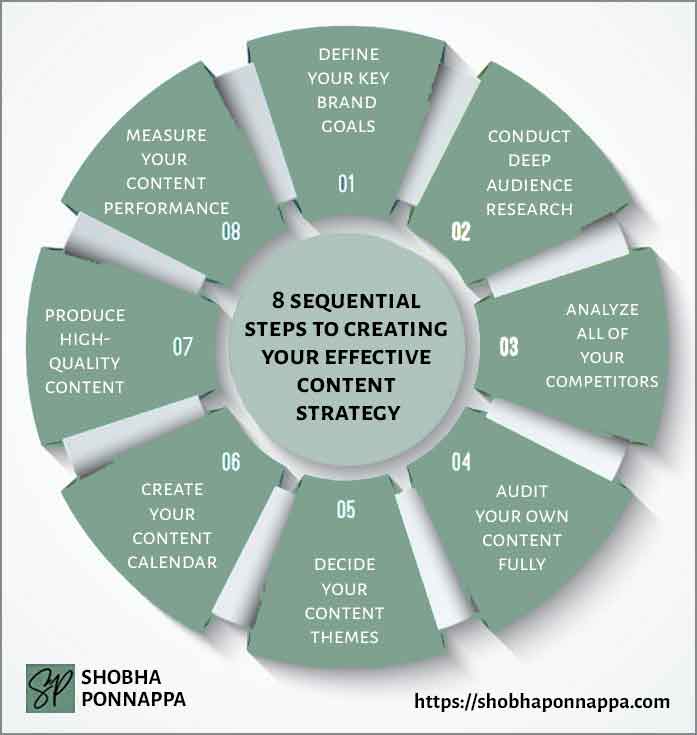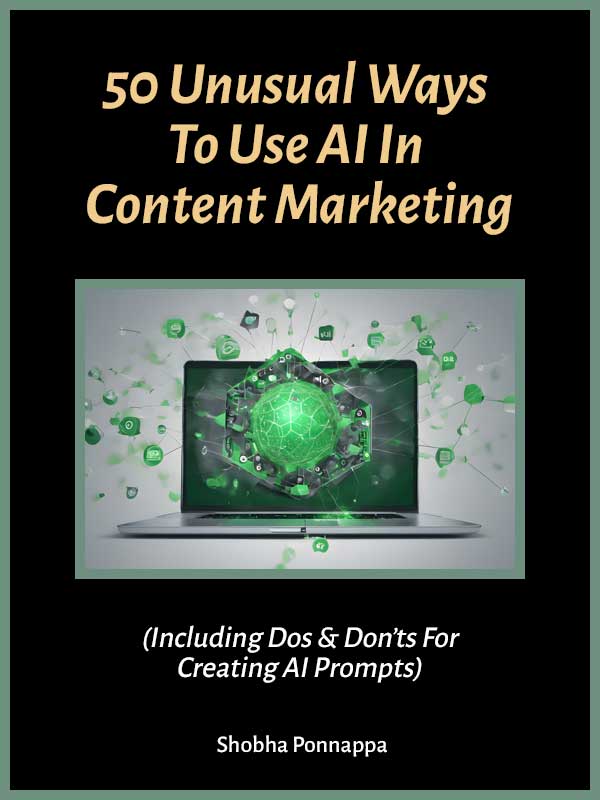
Crafting an effective content strategy has become akin to navigating a labyrinth. Many struggle to engage, retain, and convert audiences with conventional solutions.
However, the remedy lies in both proven and unusual thinking and strategies that break the mold. In this blog post, we unveil a step-by-step approach.
Our solutions, combining the power of time-tested tactics with creative, unconventional ideas, empower brands to transcend the ordinary and establish a unique digital identity.
Get ready to revolutionize your content strategy with actionable insights and game-changing techniques.
To elevate your content strategy, you must begin with a strong foundation of time-tested ideas. In a digital landscape flooded with content, relying on established strategies provides stability and a proven path to success. These tested tactics are essential for building trust and effectively engaging your audience, ensuring your brand’s reliability in delivering valuable content.
However, the true innovation in content strategy comes from seamlessly integrating these time-tested approaches with the infusion of unusual ideas. This is where my mandate and forte, encapsulated in “Unusual By Strategy,” shine. While established methods provide reliability, my approach adds a creative spark, breathing new life into your brand’s content strategy. It’s about achieving a harmonious balance between the conventional and the creative, forging a unique path that not only aligns with your core values but also captures your audience’s imagination.
By harnessing the power of both proven and unusual ideas, you can transcend the ordinary and challenge industry conventions, ultimately differentiating your brand in a highly competitive landscape. So, if you’re ready to elevate your content strategy, remember that success lies in the synergy of time-tested and unconventional approaches.
To elevate your content strategy, you must begin with a strong foundation of time-tested ideas. In a digital landscape flooded with content, relying on established strategies provides stability and a proven path to success. These tested tactics are essential for building trust and effectively engaging your audience, ensuring your brand’s reliability in delivering valuable content.
However, the true innovation in content strategy comes from seamlessly integrating these time-tested approaches with the infusion of unusual ideas. This is where my mandate and forte, encapsulated in “Unusual By Strategy,” shine.
While established methods provide reliability, my approach adds a creative spark, breathing new life into your brand’s content strategy. It’s about achieving a harmonious balance between the conventional and the creative, forging a unique path that not only aligns with your core values but also captures your audience’s imagination.
By harnessing the power of both proven and unusual ideas, you can transcend the ordinary and challenge industry conventions, ultimately differentiating your brand in a highly competitive landscape. So, if you’re ready to elevate your content strategy, remember that success lies in the synergy of time-tested and unconventional approaches.
With over 40 years of experience as a Brand Content Strategist, I offer eight time-tested approaches alongside innovative twists.
In this post, I provide proven methods for creating an effective content strategy while infusing each idea with an element of the unusual, ensuring your content strategy excels in today’s competitive landscape.

Defining your key brand goals is the compass that guides your content strategy. Imagine a software company aiming to establish thought leadership in the tech industry. Their key brand goal might be to position themselves as experts in cloud computing.
This objective shapes every piece of content they produce, from in-depth whitepapers on cloud technology trends to engaging blog posts and webinars. Each content asset aligns with this overarching goal, ensuring a cohesive and purpose-driven approach.
Moreover, clear objectives enable measurement. This company can track their progress, assessing whether they’re achieving their goal by monitoring metrics such as website traffic, lead generation, and social engagement.
In content marketing, defining your brand goals isn’t merely a preliminary step; it’s the foundation upon which your strategy is built. It ensures your content speaks directly to your audience’s needs and aspirations while helping your brand carve a distinct identity in the digital landscape.

Consider introducing a “Dream Goal” in addition to defining key brand goals. This audacious, slightly unconventional objective serves as the North Star of your content strategy. For our software company, this could mean aspiring to host a revolutionary tech summit, positioning them not just as experts but as pioneers in the industry.
While challenging to achieve, this aspirational dream goal can inspire exceptional creativity and innovation in content creation. It acts as a beacon, pushing boundaries, and motivating your team to think beyond conventional limitations, resulting in groundbreaking content that truly sets your brand apart.
Effective content strategies hinge on thorough audience research. Imagine a fashion brand aiming to resonate with Gen Z consumers. They delve deep into the interests, values, and online behavior of this demographic, uncovering a passion for sustainability and social activism.
Armed with this insight, the brand crafts content that not only showcases its latest eco-friendly collection but also highlights its commitment to ethical sourcing and sustainable practices. This resonates profoundly with their target audience, forging a connection that transcends mere fashion.
Audience research isn’t a passive activity; it’s the bedrock of content marketing. It empowers brands to create content that speaks directly to their audience’s desires and concerns.
By understanding their aspirations, pain points, and preferences, you can tailor your content strategy to deliver value and build lasting relationships.

Consider launching an “Audience Collaboration Initiative” beyond traditional audience research. Invite a select group of Gen Z individuals to actively participate in beta content creation. These co-creators could contribute ideas, provide feedback, or even star in user-generated content, fostering a sense of community and co-ownership.
By involving your audience directly, you not only gain invaluable insights but also build genuine connections. This novel approach transforms your audience into advocates, turning their passion for your brand into a driving force behind your future content strategy. It’s a win-win, where your audience feels heard, and your brand benefits from their authentic engagement and creativity.
Content strategy begins with analyzing your competitors. Imagine a boutique coffee brand aiming to outshine its rivals in the crowded caffeine market. They meticulously examine the content strategies of larger coffee chains.
By doing so, they uncover insights into what works, identify gaps, and discover ways to stand out. For instance, they observe the competition’s success with video content featuring barista secrets. Leveraging this knowledge, they craft their own engaging videos, revealing unique brewing techniques and coffee pairings.
Competitor analysis isn’t about imitation; it’s about informed innovation. By evaluating what resonates with your audience in your niche, you can tailor your content strategy accordingly.
This means creating content that’s not just visually and conceptually appealing but also strategically positioned to outperform your rivals, ultimately securing your brand’s place in the spotlight.

Consider implementing a “Mirror Buster” approach. Instead of merely analyzing competitors, step into their shoes. Assign team members to temporarily become patrons of rival coffee shops. This immersive experience reveals firsthand insights into customer service, ambiance, and the overall brand experience.
These unconventional espionage missions unveil hidden strengths and weaknesses, helping you fine-tune your content strategy. For instance, if you discover that a competitor excels in creating a cozy atmosphere, you can replicate this ambiance in your video content or blog posts. It’s a covert, innovative way to elevate your strategy by gaining an insider’s perspective, ensuring your brand stands out in a crowded field.
Auditing your own content thoroughly is a fundamental step in crafting an effective content strategy. Consider a tech company with a library of blog posts, e-books, and videos. A comprehensive content audit unveils which pieces resonate most with the audience and which fall flat.
For instance, they might discover that their in-depth technical articles garner more engagement than their shorter, more promotional posts. By identifying these trends, they can pivot towards creating more of content that truly connects with their audience.
Content auditing isn’t merely about decluttering your digital shelves; it’s about data-driven decision-making. It empowers brands to optimize their content library, ensuring that every piece aligns with their goals and audience preferences.
This strategic approach minimizes wastage of resources while maximizing the impact of your content marketing efforts.

Consider adopting a “Content Immersion Day.” Encourage your team to spend a day as consumers of your own content. This immersive experience allows them to see your content through the eyes of your audience. Team members can provide feedback on their journey, pointing out content bottlenecks or highlighting engaging moments.
This unique approach not only fosters a deeper understanding of your content but also uncovers hidden insights. It’s like a content mystery shopping expedition, helping you refine your content strategy based on firsthand experiences and making sure every piece resonates authentically with your audience.
Deciding your content themes is a pivotal step in constructing a robust content strategy. Picture an outdoor adventure brand striving to connect with adventure enthusiasts.
By selecting a theme like themes like “Extreme Expeditions,” they tailor their content to cater precisely to their target audience’s interests. This approach ensures that every piece of content contributes directly to brand relevance and audience engagement.
Content themes act as the guiding threads that weave your brand’s narrative, creating a cohesive and compelling storyline. They align your content with your brand’s identity and values while catering to your audience’s cravings for information and inspiration.
A well-defined content theme isn’t merely a creative choice; it’s a strategic one. It’s a beacon that helps your brand navigate the content landscape, ensuring that your marketing efforts resonate with your audience, ultimately leading to lasting connections and conversions.

Embrace a “Theme Expansion Challenge” within the context of your outdoor adventure brand. While adhering to your core themes, challenge your content team to expand these themes in unexpected directions. For instance, if your core theme is “Extreme Expeditions,” encourage your team to explore unique angles such as “Eco-Friendly Extreme Adventures” or “Survival Stories in the Wild.”
This approach injects creativity into your strategy, pushing your team to think innovatively while staying true to your brand’s identity. It’s like embarking on a content expedition, where you navigate familiar terrain in novel ways, providing fresh and captivating perspectives. This not only sparks creativity but also keeps your content strategy dynamic, ensuring that your audience eagerly anticipates what’s next within the expanded thematic boundaries.
Creating your content calendar is a foundational element of a well-structured content strategy. Imagine a fitness brand aiming to maintain consistent engagement with its audience.
By meticulously planning and scheduling content, such as workout routines, nutrition tips, and success stories, they ensure a steady stream of valuable information. This consistency not only keeps their audience engaged but also aligns with their overarching brand message of promoting a healthy lifestyle.
Content calendars act as the backbone of content marketing, offering a structured roadmap for content creation, distribution, and promotion. They ensure that your brand consistently delivers relevant content to your audience, avoids last-minute scrambles, and maximizes the impact of each piece.
With a well-crafted content calendar, you not only maintain audience interest but also achieve your content marketing goals effectively and efficiently.

Once a month, introduce a “Wildcard Content Day” into your content calendar. During this time, your content team can experiment with entirely new and unexpected content ideas that deviate from your usual themes. For the fitness brand, this could mean creating a fun dance challenge video, a motivational spoken-word piece, or even a day-in-the-life vlog of a fitness trainer.
This wildcard approach infuses spontaneity and excitement into your content strategy, surprising and delighting your audience. It’s like a fitness adventure day within your calendar, ensuring that your audience remains engaged and curious about what surprises your brand will unveil next.
Producing high-quality content is the cornerstone of any successful content strategy. Imagine an interior design brand aiming to establish itself as an industry authority.
Their meticulously crafted blog posts not only showcase stunning room makeovers but also provide in-depth insights into design principles and trends. This commitment to quality elevates their brand as a go-to source for design enthusiasts.
In content marketing, quality isn’t just about aesthetics; it’s about value. High-quality content addresses your audience’s needs, educates, entertains, or solves problems. It showcases your brand’s expertise, builds trust, and fosters loyalty.
Such content attracts and retains an engaged audience, ultimately driving conversions. In a digital world flooded with content, quality is your differentiator, ensuring that your brand stands out and holds a prominent place in your audience’s heart and mind.

Introduce a “Quality Crossover Challenge” within your team. Periodically, have your content creators swap roles to step into each other’s creative shoes. This unusual approach encourages fresh perspectives and cross-pollination of ideas. For the interior design brand, it could mean a writer trying their hand at creating a mood board, or a designer crafting a blog post.
This unconventional exercise not only fosters creativity but also strengthens collaboration within your team, resulting in content that’s more holistic, innovative, and engaging. It’s like a creative playground within your content strategy, where unique collaborations lead to remarkable content that captivates your audience and showcases your brand’s versatility.
Measuring content performance is a crucial step in optimizing your content strategy’s effectiveness. Consider a tech gadget brand launching a series of product review videos.
By analyzing metrics such as view counts, audience engagement, and conversion rates, they can identify which videos resonate most with their audience. This data-driven approach allows them to refine their content strategy, focusing on the types of videos that deliver the best results. Content marketing isn’t a shot in the dark; it’s a precision game.
Measuring performance provides invaluable insights into what works and what doesn’t. It helps you allocate resources effectively, fine-tune your content, and achieve your marketing goals.
It’s akin to a navigational compass in the content marketing landscape, guiding you toward success by ensuring that every piece of content contributes to your brand’s growth and engagement.

Launch a “Performance Prediction Challenge.” Have your team predict the performance of upcoming content pieces before they’re published. Each team member can wager their predictions on various metrics like engagement, shares, or comments. This gamified approach not only infuses excitement but also taps into collective wisdom. Once the content goes live, compare the actual performance against predictions.
Those with the most accurate forecasts could earn incentives or recognition. It’s a unique way to harness your team’s insights, turning performance analysis into a collaborative and competitive endeavor. This unusual enhancement cultivates a culture of data-driven creativity, where your team’s intuition and analytical skills are put to the test, ultimately leading to more accurate content predictions and refined strategies.
Strategic content variety: The key to a successful content strategy is creating a variety of content types that align with your brand’s core themes and resonate with your target audience. This diversity keeps your audience engaged and eager for more.
Data-driven decision making: Measuring content performance is not just a post-publishing task; it’s an integral part of the content creation process. By regularly analyzing performance metrics and integrating audience feedback, you can refine your strategy and prioritize content that consistently delivers results.
Unconventional enhancements: Injecting creativity and spontaneity into your content strategy can lead to remarkable outcomes. Unusual enhancements like theme extensions or performance prediction challenges can spark innovation, foster teamwork, and elevate your content’s impact.

"As a Content/Brand Specialist, and SEO/UX Writer, I can help transform your brand's online presence. I can lift it with innovative ideas to take it to an enviable position. Let's collaborate to create a captivating brand story, engage your audience, boost your online visibility, and increase your ROI. Take the next step towards your brand content success and contact me today."
Shobha Ponnappa
I Bring You:
Content Marketing That’s “Unusual By Strategy” … Tips, Tricks, Tactics, Techniques, Trends, Training.
Get my weekly ContenTracker Newsletter packed with loads of content marketing ideas – proven and unusual.
Get a free download of my ebook on “50 Unusual Ways To Use AI In Content Marketing” … and transform your success.

Just fill in the form to join my community … we have big and small brands for company. You’ll stay on the speedway to growth.
KEY TOPIC CATEGORIES COVERED ON THIS SITE:
COPYRIGHT © 2024. SHOBHAPONNAPPA.COM. ALL RIGHTS RESERVED.

Just fill in this form and get this awesome ebook in your email inbox. Plus … each week you’ll receive my ContenTracker Newsletter that brings you tips, tricks, tactics, techniques, trends, and training on the latest in content marketing.